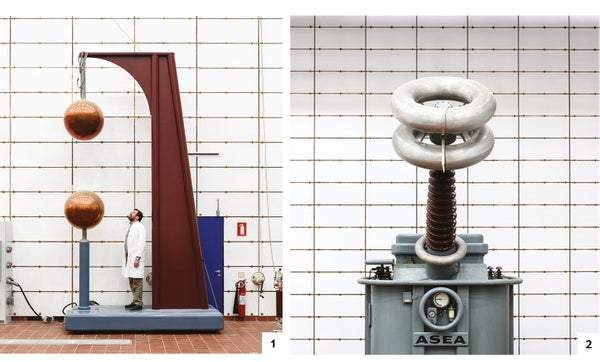On supporting science journalism
If you're enjoying this article, consider supporting our award-winning journalism by subscribing. By purchasing a subscription you are helping to ensure the future of impactful stories about the discoveries and ideas shaping our world today.
Wind turbines are lightning magnets—and strikes on these tall, spinning structures can cause significant damage. Blades explode; generators and control system electronics fry. To figure out how to safely disperse lightning, turbine manufacturers have turned to the Technical University of Denmark's High Voltage Lab. Using giant versions of standard electrical devices such as sphere gaps, transformers and capacitors, the facility can generate huge arcs of electricity—up to 800,000 volts AC. The equipment helps companies test how new turbine parts or mechanisms will respond to electrical surges out in the field.
“Many high-voltage labs, they look like something from the 1960s,” says Joachim Holbøll, a professor and deputy head of the university's Center for Electric Power and Energy. “But we are doing necessary stuff in there with the newest equipment. Parts of this will always look a little old-fashioned, but that is simply because it works.”
The lab is also tackling a new problem: wind turbines are getting so tall that they frequently generate “up lightning.” This type originates from the turbine's own electric field and leaps from the tip of a blade to meet a downward bolt. The direction of the bolt does not change the form of protections that the turbines need, Holbøll says. But understanding these dynamics is critical to modeling the frequency of lightning strikes at wind farms, and the High Voltage Lab is working to verify theoretical and computational descriptions of this phenomenon. In 2015 wind power provided 42 percent of the electricity Denmark consumed.
